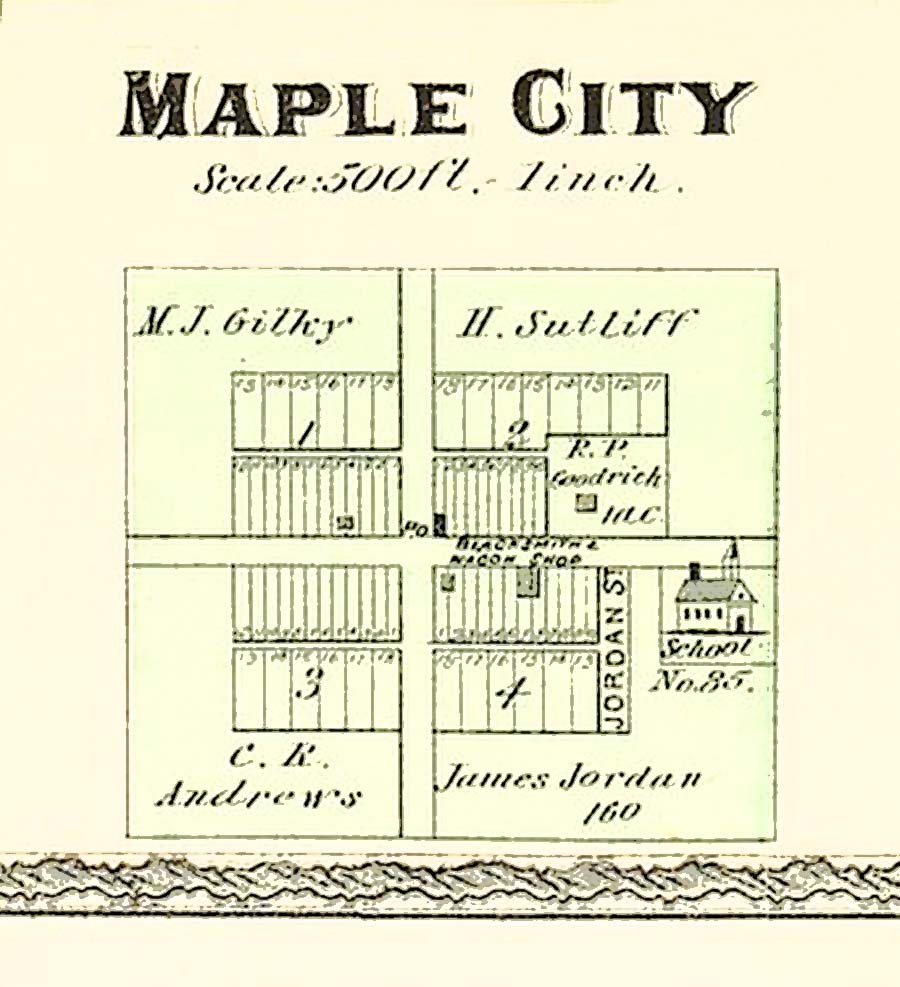Like a prairie flower, once fresh, picked and placed in a book long forgotten, is the story of Maple City, Kansas. When one finds such a flower preserved, one wonders what it once meant to the one who once held so dear. I found such a flower in the Chapman Center Research Collections.

Before Statehood
Kansas was once once the home of many Indian tribes. These included the powerful Osage who ranged far and wide. Smaller tribal groups like the Kansas and Wichita lived here too. Western Kansas include the Kiowa, the Cheyenne, and the Pawnee, and occasionally, the Comanche. Other tribes were moved here from the east, most notably, the Cherokee.
The end of the Civil War created a renewed demand for Indian lands in the former Kansas territory and now the State of Kansas. By 1871, lands once reserved for the Osage and Cherokees was opened for settlement. Robert P. Goodrich and his family took this opportunity to move to Cowley County and purchase 160 acres as allowed by law. Goodrich sold his farm but kept a portion of his land and this became for a short while Maple City.
Robert P. Goodrich
Robert P. (Phares) Goodrich was born in 1825 in Greene County, high up on the Hudson River, and raised in Union County, Ohio, northwest of what is now Columbus. In 1847, he married Miss Oroline Bell, of Steuben County, N. Y.. She would give birth to nine children. In 1855, at the age of 30, they moved to central Illinois where he farmed for 18 years and took up the trade of wagon-making.
Finally, in 1873, the family left for Kansas where Goodrich purchased a farm of 160 acres near the Oklahoma border in Silver Creek Township. He also purchased a spacious lot in Maple City, a mile to the south. Here he built a home and planted an orchard with peach, apple and pear trees, assorted berries, along with vegetables and flowers. An industrious man, that same year he built the town’s first schoolhouse, which stood until 1918. And the following year, in 1874, he built a shop and began again the business of wagon making. It was, however, a sorry year for Kansas. Grasshoppers arrived in Biblical proportions and the what crop there was failed. He aided in distributing relief to the devastated farmers in his community.
In 1876, Maple City was a village of five or six houses.
Goodrich sold his farm and became the Mayor of Maple City, a little place in the midst of pastures and homesteads.

Maple City
In 1879, Goodrich built a one and a half story addition to his home and opened it to the public for accommodations as the Maple City House. In addition to his business of wagon making and operating a hotel, he acted as mayor of Maple City and Director of the School District. By 1886, Maple City had four general merchandise stores, one hardware store, Goodrich’s wagon shop, two blacksmith shops, a lumber yard, one livery stable, Goodrich’s hotel, barbershop, two real estate and loan agencies, a couple of carpenters, a painter, and one doctor. In the 1880s the wagon making business changed names from Goodrich and Davis to Gooch and Goodrich.
He was a Republican of good standing. In 1876, the nearest railroad being quite distant, the Republicans of the township including Goodrich lobbied the state for the issuance of bonds to build a railroad. The railroads came, but all passed by Maple City, which hindered its growth. Today, Maple City lies far off or Highway 166, east of Arkansas City and south of the highway, not too many miles from the Oklahoma border. A few homes dot the landscape and the Maple City Community Church, but not much else. The cemetery is a mile north.
He died in 1898, at the age of 73, and is buried in the Maple City cemetery. His wife Oroline died in 1906 and is buried alongside him.

Sources
William Cutler’s History of the State of Kansas, Cowley County, 1883